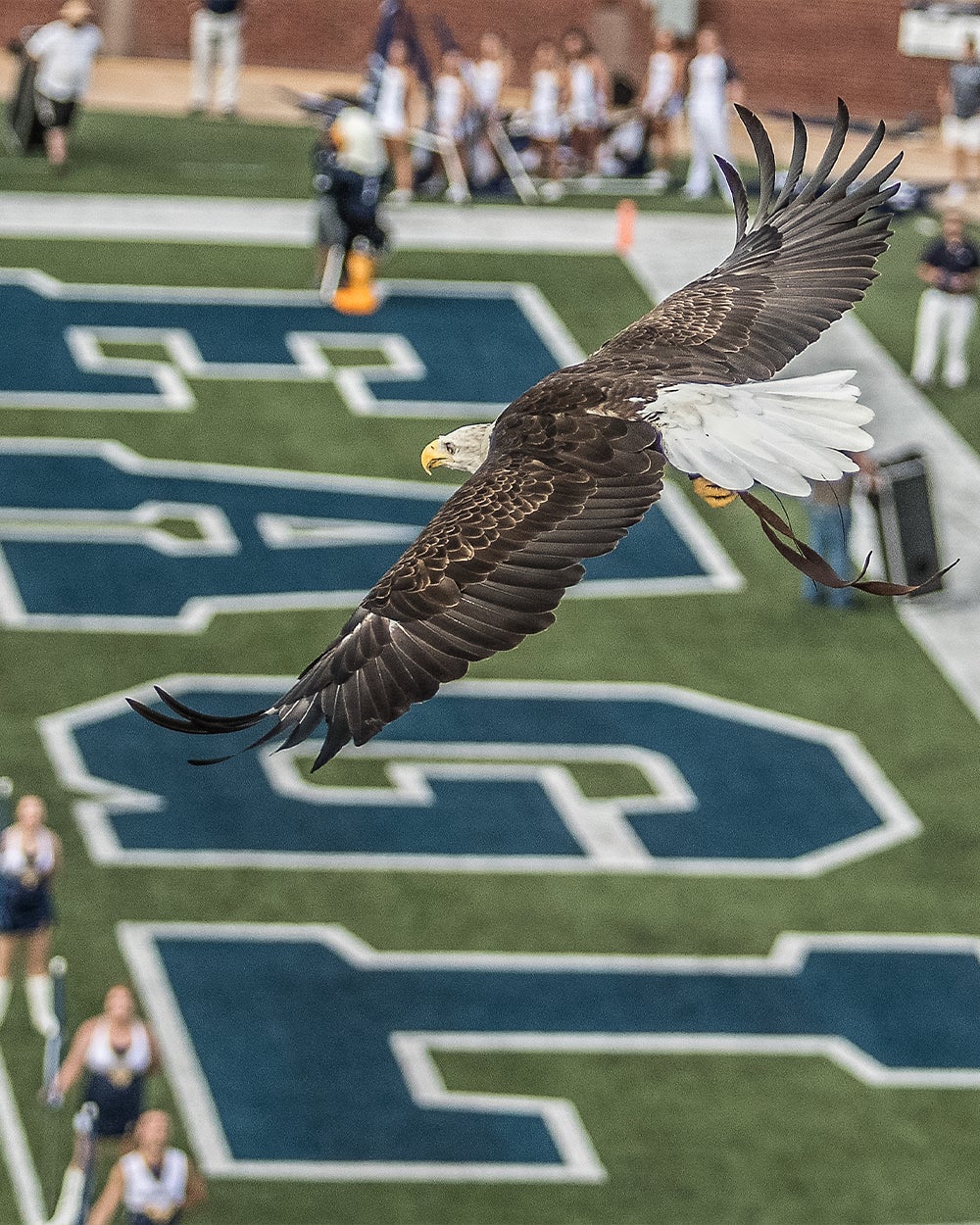Stephanie Lukowski joins as Curator of Education at Georgia Southern Museum

Stephanie Lukowski recently joined the staff at the Georgia Southern Museum on the Statesboro Campus as the curator of education. In her role, she helps implement educational programming for the Museum to complement the exhibits the Museum showcases. Read on to learn more about Lukowski and her role in Eagle Nation.
Q: Where are you from, and what brought you to Georgia Southern?
A: I’m pretty lucky in that my work has allowed me to live in a variety of interesting places (as well as a few not-so-interesting places). I grew up in the Chicago area, and I received my undergraduate degree in geology at Tulane University in New Orleans, Louisiana. After, I moved to Rapid City, South Dakota, where I received a master’s degree in vertebrate paleontology at the South Dakota School of Mines and Technology. Since then, I’ve lived throughout the western part of the United States as well as in Panama. Most recently, I lived in Colorado where I completed a master’s degree in natural science education from Colorado State University while also working full time in museum education. I moved to Statesboro in July, after having accepted the curator of education position at the Georgia Southern Museum.
Q: What exactly is a curator of education?
A: A curator of education is responsible for designing and implementing educational content and programming as it relates to the exhibits and collections at a museum. Because our museum has recently undergone extensive renovations of the exhibit space, my job is to design completely new programming and educational materials to reflect the changes. These new programs and materials will not only serve Georgia Southern students but also local and regional K-12 education, as well as the general public.
I really love working in museum education because it not only gives me the opportunity to learn new things, but I get to share what I have learned with a wide audience. Every day brings new opportunities and challenges.
Q: Have you worked in other museums before, and if so, where?
A: I’ve worked in a variety of institutions from museums to paleontological resource management to national parks. My career thus far has been a balance between paleontology fieldwork and working in museums as a paleontologist and a museum educator. Prior to moving to Statesboro, I was the curator of education for a collective of three museums in western Colorado. I designed and ran the entire education program for all three sites, which included a living history farm, a cultural history museum and a paleontology museum.
Q: What are some ideas or goals for the Museum you hope to accomplish in your role?
A: My goal is to create inclusive programming that highlights the unique fossils and artifacts we have on display as well as the research being done here at Georgia Southern. My hope is for the Georgia Southern Museum to be one of the first places that people think of when they want to learn about both the natural and cultural history of the coastal plain of Georgia.
Q: What would you like faculty and staff to know about the Museum and your role?
A: We love having faculty bring their students to the Museum! If you are looking for a specialized tour or to visit outside our normal hours, please reach out. We are happy to accommodate special requests.
Q: What is your favorite thing about the Georgia Southern Museum?
A: That’s a tough question because there are so many wonderful things about the Georgia Southern Museum. I really like working in small museums in general because it gives you the opportunity to function in a variety of positions. The Georgia Southern Museum has all of the best parts of a small museum with the support of a much larger institution. I’ve really enjoyed working with students, staff and faculty from a variety of departments, and I look forward to branching out even more.
I also really enjoy our updated exhibits. We have a lot of interesting fossils and artifacts and the recent renovation helps tell their stories. For example, we have a cast of the holotype of a 41-million-year-old whale called Georgiacetus vogtlensis on display. A holotype is a specimen that serves as a reference for the entire species, often designated when a new species is described. Georgiacetus is one of the earliest whales in North America and we have the actual fossils here at Georgia Southern. It’s pretty neat to be able to walk into the Hall of Natural History and see this amazing find in the context of other whale fossils found in the region.
To learn more about the Georgia Southern Museum and the exhibits, visit GeorgiaSouthern.edu/Musuem.
Posted in My News, Staff, You May Have Heard
